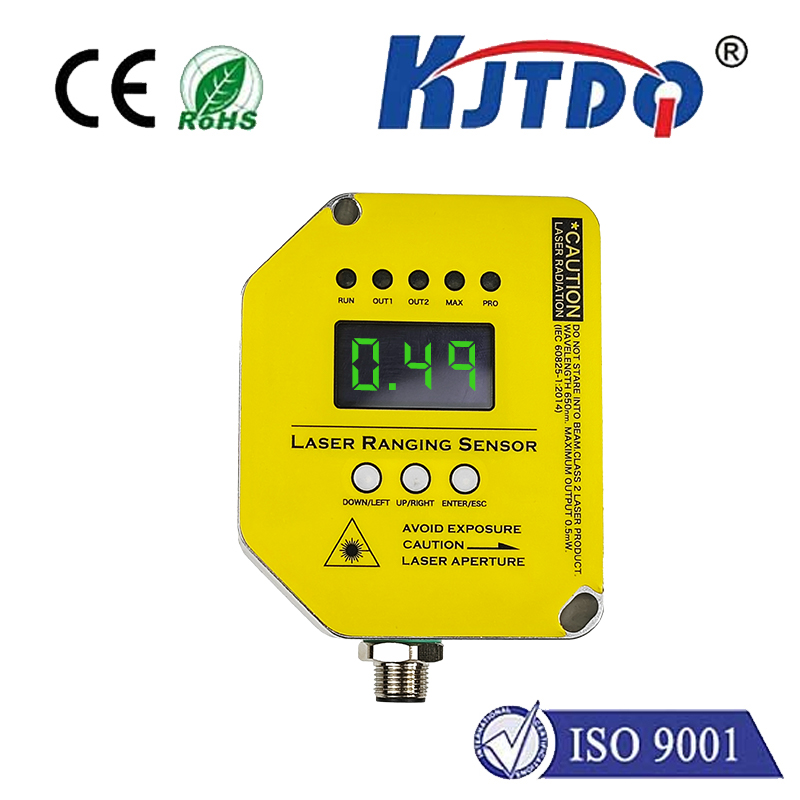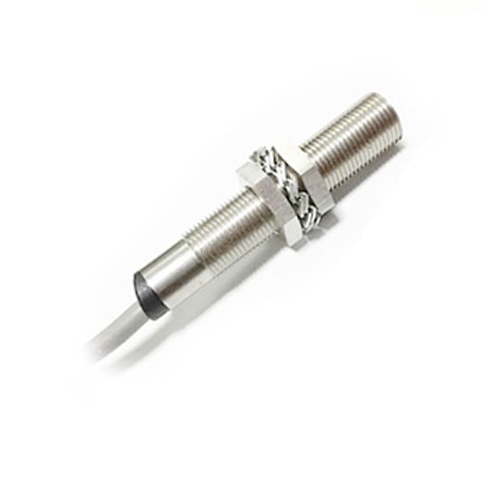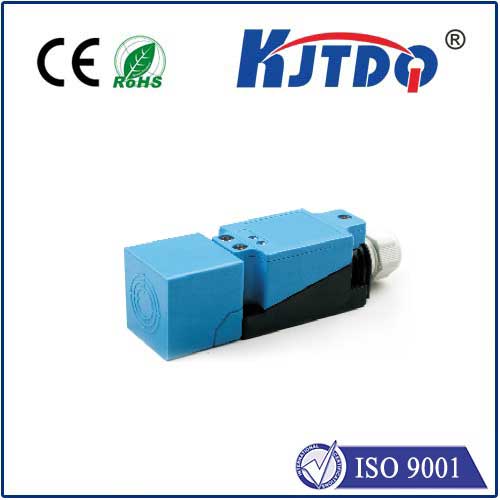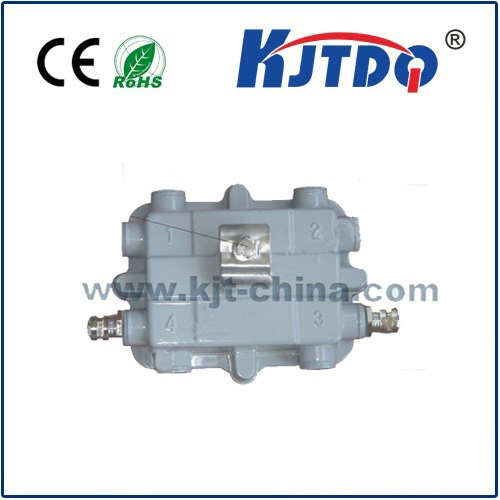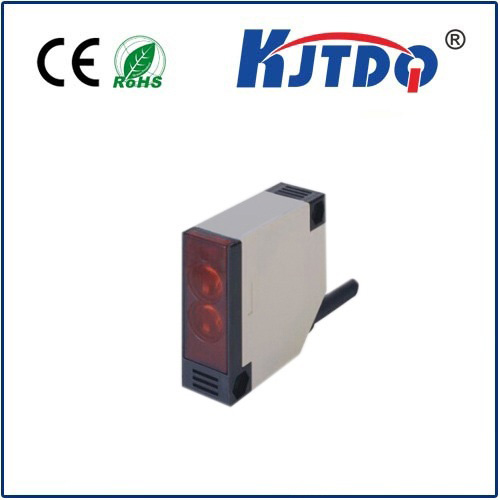proximity sensor pnp no
- time:2025-09-09 02:32:42
- Click:0
Proximity Sensor PNP NO: The Sourcing, Normally Open Workhorse of Automation
Imagine a machine that precisely assembles components, a robotic arm gently placing items on a conveyor, or a safety system ensuring a guard door is closed before operation. At the heart of these critical functions, silently and reliably performing millions of detection cycles, often lies a fundamental component: the PNP Normally Open (NO) proximity sensor. This specific configuration is a cornerstone of industrial automation, prized for its straightforward operation and compatibility with common control systems. But what exactly does “PNP NO” mean, and why is it so widely used? Let’s delve into the world of sensing technology to uncover its workings.
Decoding the Terminology: PNP and NO
Before understanding the combined “PNP NO” sensor, it’s essential to break down the two key descriptors:
- PNP (Sourcing Sensor): This defines the type of output transistor used within the sensor’s electronics and, consequently, how it interfaces with the load (like a PLC input module, relay, or indicator light).
- Inside a PNP proximity sensor, the output transistor acts like a switch connected to the positive supply voltage (V+).
- When the sensor detects a target (metal object within its sensing range), its internal circuitry activates this PNP transistor. This action effectively connects the sensor’s output signal wire (usually brown or black) to the positive voltage supply.
- In simpler terms: A PNP sensor sources positive current out of its output terminal when active. It provides the “power” side of the circuit to the connected load.
- NO (Normally Open): This describes the default electrical state of the sensor’s output switch when no target is present.
- Normally Open means that the internal output switch is open (non-conducting) when the sensor is not detecting a target within its specified sensing distance. In this state, no current flows from the output terminal to the common terminal (usually blue wire, 0V).
- Only when a valid target enters the sensing field does the sensor activate, closing the internal switch. This allows current to flow from the output, through the load, and back to the power supply common (0V).
Putting it Together: How a PNP NO Proximity Sensor Operates
Combining these concepts gives the complete picture:

- Default State (No Target): The sensor is inactive. Its output transistor (PNP) is OFF, meaning the output signal line is electrically disconnected from the positive supply. The Normally Open switch is open. No current flows through the load connected to the sensor’s output. To a PLC input or monitoring device, this state typically reads as “0” or “OFF”.
- Active State (Target Detected): When a target (e.g., a metal flag, machine part) enters the predefined sensing range, the sensor’s oscillator circuit is influenced (damped in inductive types), triggering the internal electronics. This turns ON the PNP transistor, connecting the output signal line directly to the positive supply voltage (V+). Simultaneously, the NO switch closes. Current now sources (flows out) from the sensor’s output terminal, through the connected load (e.g., into the PLC input), and back to the power supply’s common (0V) terminal. This active state is read by the control system as “1” or “ON”.
Visualizing the Circuit
The typical wiring for a 3-wire PNP NO proximity sensor in a DC circuit is crucial:
- Brown Wire: Connect to Positive DC Supply Voltage (V+, e.g., +24V)
- Blue Wire: Connect to DC Common / 0V / Ground
- Black (or sometimes White) Wire: The Load Output Signal. Connect this wire to one side of your load (e.g., PLC input terminal, relay coil terminal). The other side of the load must then be connected back to the DC Common / 0V / Ground (Blue wire).
When Active: V+ (Brown) -> PNP Transistor (ON) -> Signal Output (Black) -> LOAD -> 0V (Blue). Current flows FROM the sensor.
Why Choose a PNP NO Proximity Sensor?
The popularity of the PNP Normally Open configuration stems from several key advantages:
- Common PLC Compatibility: Many programmable logic controllers (PLCs) in Europe and increasingly worldwide are designed with sinking input modules. A PNP (sourcing) sensor provides a positive voltage signal precisely when active, which is the ideal match for these sinking inputs. The PLC input effectively “sinks” the current provided by the sourcing PNP sensor.
- Intuitive Logic: The Normally Open behavior aligns naturally with many control logic requirements. The sensor output is “OFF” (open circuit) when nothing is detected, and “ON” (closing to provide power) when a target is present. This directly corresponds to actions like “start process when part detected” or “activate if guard closed”. The signal becomes active (ON) precisely when detection occurs.
- Safety Considerations (in some contexts): While not a universal safety rule, a Normally Open sensor in a critical “stop” circuit (like an E-stop loop) is sometimes preferred. In a properly wired safety circuit, a broken wire on an NO sensor input often mimics the “no detection” state (open circuit), which can be designed to trigger a safe shutdown. Crucially, this depends on the overall safety circuit design principle (e.g., de-energize to trip).
- Clarity for Indicators: Connecting a simple indicator lamp (with a series resistor) between the PNP NO output and ground (blue) is straightforward. The lamp lights only when the sensor detects a target, providing clear visual feedback.
- Robustness: Modern PNP NO inductive proximity sensors are renowned for their durability, immunity to environmental contaminants (dust, oil, water – check IP rating!), and long service life in harsh industrial environments.
Key Applications in Automation
The PNP NO proximity sensor’s reliability and logic make it suitable for countless tasks:
- Object Detection: Confirming the presence/absence of parts on conveyors, in fixtures, or at workstations. Is the part in place for the next operation?
- Position Verification: Detecting the end-of-travel or home position of cylinders, slides, or actuators. Has the cylinder fully retracted?
- Counting: Tallying objects passing a point on a conveyor line. How many bottles passed inspection?
- Speed Monitoring: Detecting rotating shafts, gears, or sprockets (requires appropriate frequency response). Is the motor shaft turning?
- Level Control: Detecting the presence of metal objects (like bins or chutes filling) or used with metallic floats. Is the bin full?
- Safety Interlocks: Verifying guard doors are closed or safety mats are clear before enabling machine motion (as part of a validated safety circuit).
Selecting and Using PNP NO Sensors Effectively
When choosing a sensor, consider:
- Sensing Technology: Inductive (metal only), Capacitive (metal, plastic, liquid levels), Ultrasonic, Photoelectric. PNP NO describes the output type, not the technology. Inductive is most common for PNP NO metal detection.
- Sensing Distance: The specified nominal range (
Sn) for reliable detection. Install with adequate clearance.
- Mounting: Flush or non-flush? Cylindrical (threaded barrel)








